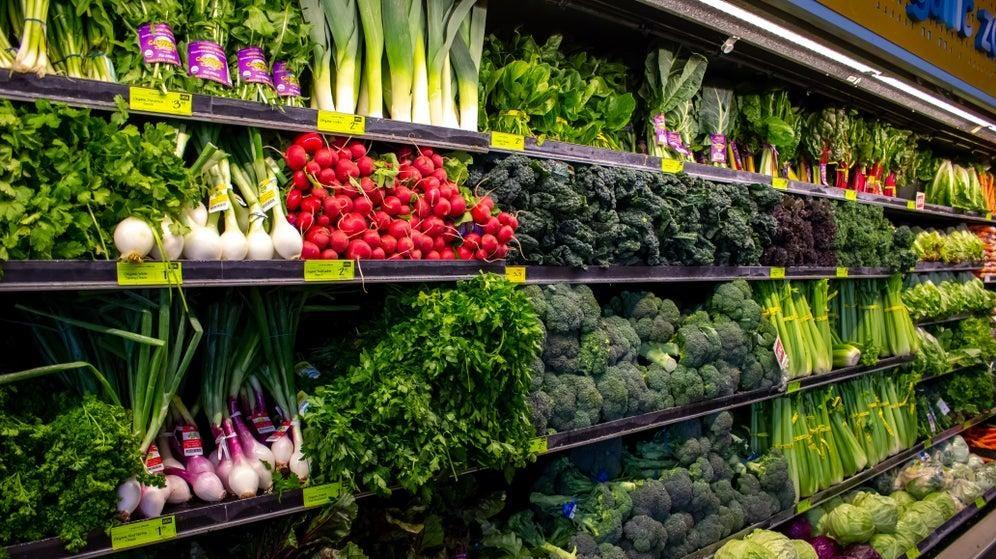Why The 'Dirty Dozen' Produce List Can't Be Trusted
The 2022 Dirty Dozen list of fruits and veggies with "high pesticide residues" is making a splash. Approach it with a healthy skepticism.
It's that time again: the Environmental Working Group has released the 2022 Dirty Dozen, its annual list of the "most pesticide-contaminated fresh fruits and vegetables." For years, Takeout reporters—myself included—have taken this list at face value. But here I am, another year older, another year wiser, and another year better at interpreting shady data. I'm here to advise you to wade carefully through these claims about your produce.
What is the Dirty Dozen list?
The Dirty Dozen is a high-profile annual list produced by the Environmental Working Group, or EWG. The list identifies the 12 "most pesticide-contaminated conventionally grown fruits and vegetables." It's published alongside the Clean Fifteen, EWG's list of the "least pesticide-contaminated" produce.
This year's list looks a lot like last year's. Strawberries, spinach, and leafy greens all top the Dirty Dozen, suggesting that those items feature high quantities of pesticide residue as determined by USDA testing. (The USDA washes, scrubs, and peels all produce before testing for lingering pesticide residues. That's an important point to keep in mind: EWG doesn't test the produce in-house. Instead, it aggregates data from USDA testing released by the agency over the course of several years.)
Who publishes the Dirty Dozen?
The EWG describes itself as "a non-profit, non-partisan organization dedicated to protecting human health and the environment." The organization isn't entirely devoted to produce; it also promotes research on issues like tap water contamination and uranium mining. (The EWG has also come under fire in the past for supporting anti-science rhetoric including the soundly debunked claim linking vaccines to autism.)
The organization's current Board of Directors includes a number of folks who have staked their personal brands on the wellness movement. That includes one Karen Malkin, the creator of a diet program called 14 Day Transformation that promises to "ignite your internal fat-burning machine," and Natasha Beck, the founder of a blog called Dr. Organic Mommy.
Who’s against the Dirty Dozen?
This question is a bit more complicated. For years, a number of organizations have called for an end to EWG's Dirty Dozen list. My inbox is currently full of press materials from one particularly fired-up organization: the Alliance for Food and Farming (AFF), an organization formed in 1989 to represent a number of agricultural interests including commodity boards and major farm groups. The AFF certainly isn't a neutral party; its board includes representatives from organizations like Potatoes USA and the U.S. Apple Association. (The latter also has a PAC with a robust history of donating to Republican legislators.)
Why you should question the Dirty Dozen list
EWG opponents like to argue that the Dirty Dozen list is based in faulty science. For example, the AFF frequently cites a 2011 paper published by scientist Carl Winter in the Journal of Toxicology, which highlights EWG's flawed data analysis. It's easy to see why the AFF would advocate against the EWG list, which could harm the interests of AFF's major farm groups. But Winter, a respected toxicologist, is a neutral third party whose research went deep on the subject.
Winter's 2011 study investigated the pesticide levels of the Dirty Dozen list. Winter questioned a number of the EWG's findings, as well as the shaky methodology used to obtain that data. "It is unclear how the EWG could make such a statement since the methodology used to rank the various fruits and vegetables did not specifically quantify consumer exposure to pesticide residues in such foods," Winter wrote in the study. In other words, the EWG's ranking doesn't specify pesticide quantity or toxicity levels. It only accounts for "detectable levels" of pesticides as detected by USDA researchers.
Finally, Winter concluded that exposure to the most commonly detected pesticides on the Dirty Dozen list "poses negligible risks to consumers." Other researchers echo this conclusion; in 2019, the University of California published a summary of its Personal Chemical Exposure Program. During that process, researchers concluded that children would have to eat "hundreds of thousands of servings of fruits or vegetables laden with pesticides" for any adverse health effects.
Can we learn anything from the Dirty Dozen?
The Dirty Dozen list focuses largely on consumers—health-conscious families, specifically. But it's important to keep in mind that consumers aren't the only ones potentially impacted by pesticides. Farm workers are exposed to these chemicals every day at much higher quantities than the average American consumer. Chances are, your kids can lick all the apples they want without suffering adverse effects. Farm workers are the ones most likely to experience health effects like hormone disruption, brain and nervous system toxicity, and cancer.
Another important consideration: Do U.S. government regulatory agencies really have your best interests at heart? Yes, the USDA's Pesticide Data Program (PDP) report has consistently found that most Dirty Dozen offenders have pesticide residues that are well below the EPA's established safety standards. But how safe are those standards given the fact that U.S. farmers are still permitted to employ toxic chemicals that have been banned across the pond for years? Can we trust that the EPA and USDA are committed to consumer health over agricultural profit margins? Somebody call Erin Brockovich.
The ultimate issue with the Dirty Dozen list is that it emphasizes individual choice, thus placing the onus on consumers—consumers who may not have access to fully organic produce. For all the EWG's jawing about pesticide residues, the organization doesn't seem particularly interested in advocating for large-scale agricultural policies that protect farm workers and consumers. To truly protect the American public from harmful chemicals, we'd have to see full-scale agricultural revolution. The EWG probably isn't going to get us there.
